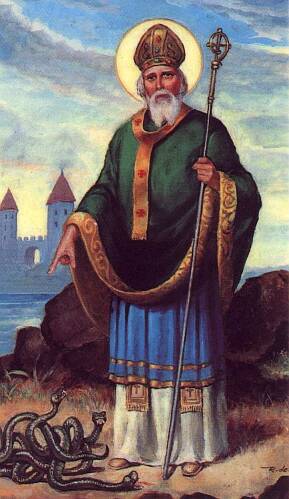|
Moderated by NW Okie! |
Volume 13 , Issue 112011Weekly eZine: (371 subscribers)Subscribe | Unsubscribe Using Desktop... |
Duchess Irish Domain

With St. Patrick's Day just around the corner, Who Was St. Patrick? We know that St. Patrick was the patron saint of Ireland and one of Christianity's most widely known figures. But his life remains somewhat of a mystery. They say that many of the stories traditionally associated with St. patrick, including the famous account of his banishing all the snakes from Ireland, are false. These stories are products of hundreds of years of exaggerated storytelling.
St. Patrick was born in Britain to wealthy parents near the end of the fourth century. He is believed to have died on March 17, around 460 A.D. Although his father was a Christian deacon, it has been suggested that he probably took on the role because of tax incentives and there is no evidence that Patrick came from a particularly religious family. At the age of sixteen, Patrick was taken prisoner by a group of Irish raiders who were attacking his family's estate. They transported him to Ireland where he spent six years in captivity. (There is some dispute over where this captivity took place. Although many believe he was taken to live in Mount Slemish in County Antrim, it is more likely that he was held in County Mayo near Killala.) During this time, he worked as a shepherd, outdoors and away from people. Lonely and afraid, he turned to his religion for solace, becoming a devout Christian. (It is also believed that Patrick first began to dream of converting the Irish people to Christianity during his captivity.)
The First St. Patrick's Day Parade
The first St. Patrick's Day parade took place not in Ireland but in the United States. Irish soldiers serving in the English military marched through New York City on March 17, 1762. Along with their music, the parade helped the soldiers reconnect with their Irish roots, as well as fellow Irishmen serving in the English army.
Wearing Green Around the World
Today, St. Patrick's Day is celebrated by people of all backgrounds in the United States, Canada and Australia. Although North America is home to the largest productions, St. Patrick's Day has been celebrated in other locations far from Ireland, including Japan, Singapore and Russia. Was the wearing of the Green because of the "Green Machine" as stated below?
Up until the mid-19th century, most Irish immigrants in America were members of the Protestant middle class. When the Great Potato Famine hit Ireland in 1845, close to a million poor and uneducated Irish Catholics began pouring into America to escape starvation. Despised for their religious beliefs and funny accents by the American Protestant majority, the immigrants had trouble finding even menial jobs. When Irish Americans in the country's cities took to the streets on St. Patrick's Day to celebrate their heritage, newspapers portrayed them in cartoons as drunk, violent monkeys.
However, the Irish soon began to realize that their great numbers endowed them with a political power that had yet to be exploited. They started to organize, and their voting block, known as the "Green Machine," became an important swing vote for political hopefuls. Suddenly, annual St. Patrick's Day parades became a show of strength for Irish Americans, as well as a must-attend event for a slew of political candidates. In 1948, President Truman attended New York City 's St. Patrick's Day parade, a proud moment for the many Irish whose ancestors had to fight stereotypes and racial prejudice to find acceptance in America.
Happy St. Patrick's Day, March 17th!
| View or Add Comments (0 Comments)
| Receive
updates ( subscribers) |
Unsubscribe
| © . Linda Mcgill Wagner - began © 1999 Contact Me | |
